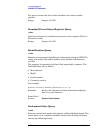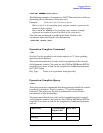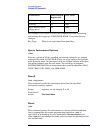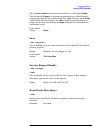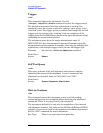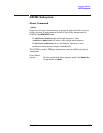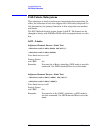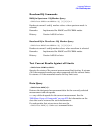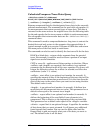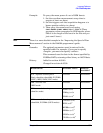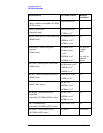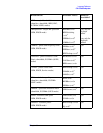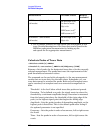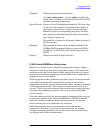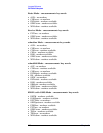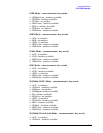
196 Chapter 5
Language Reference
CALCulate Subsystem
Calculate/Compress Trace Data Query
:CALCulate:DATA[n]:COMPress?
BLOCk|CFIT|MAXimum|MEAN|MINimum|RMS|SAMPle|SDEViation
[,<soffset>[,<length>[,<roffset>[,<rlimit>]]]]
Returns compressed data for the designated trace data in the currently
selected measurement. The command can be used with sub-opcodes (n)
for measurements that return several types of trace data. The data is
returned in the same units as the original trace. See the following table
for the sub-opcodes for the trace names available in each measurement.
For sub-opcodes that return scalar data use the :CALCulate:DATA[n]?
command above.
This command is used to compress/decimate a long trace to extract the
desired data and only return to the computer the requested data. A
typical example would be to acquire N frames of GSM data and return
the mean power of the first burst in each frame.
The command can also be used to identify the best curve fit for the data.
BLOCk or block data - returns whole segments from the queried
trace. For example, it could be used to return a portion of an input
signal over several timeslots.
CFIT or curve fit - applies curve fitting routines to the data. Where
<soffset> and <length> are required, and <roffset> is an optional
parameter for the desired order of the curve equation. The query will
return the following values: the x-offset (in seconds) and the curve
coefficients ((order + 1) values).
<soffset> - start offset is an optional real number (in seconds). It
specifies the amount of data at the beginning of the trace that will be
ignored before the decimation process starts. It is the time from the
start of the trace to the point where you want to start using the data.
The default value is zero.
<length> - is an optional real number (in seconds). It defines how
much data will be compressed into one value. This parameter has a
default value equal to the current trace length.
<roffset> - repeat offset is an optional real number (in seconds). It
defines the beginning of the next field of trace elements to be
compressed. This is relative to the beginning of the previous field.
This parameter has a default value equal to the <length> variable.
<rlimit> - repeat limit is an optional integer. It specifies the number
of data items that you want returned. It will ignore any additional
items beyond that number. You can use the Start offset and the
Repeat limit to pick out exactly what part of the data you want to
use. The default value is all the data.



